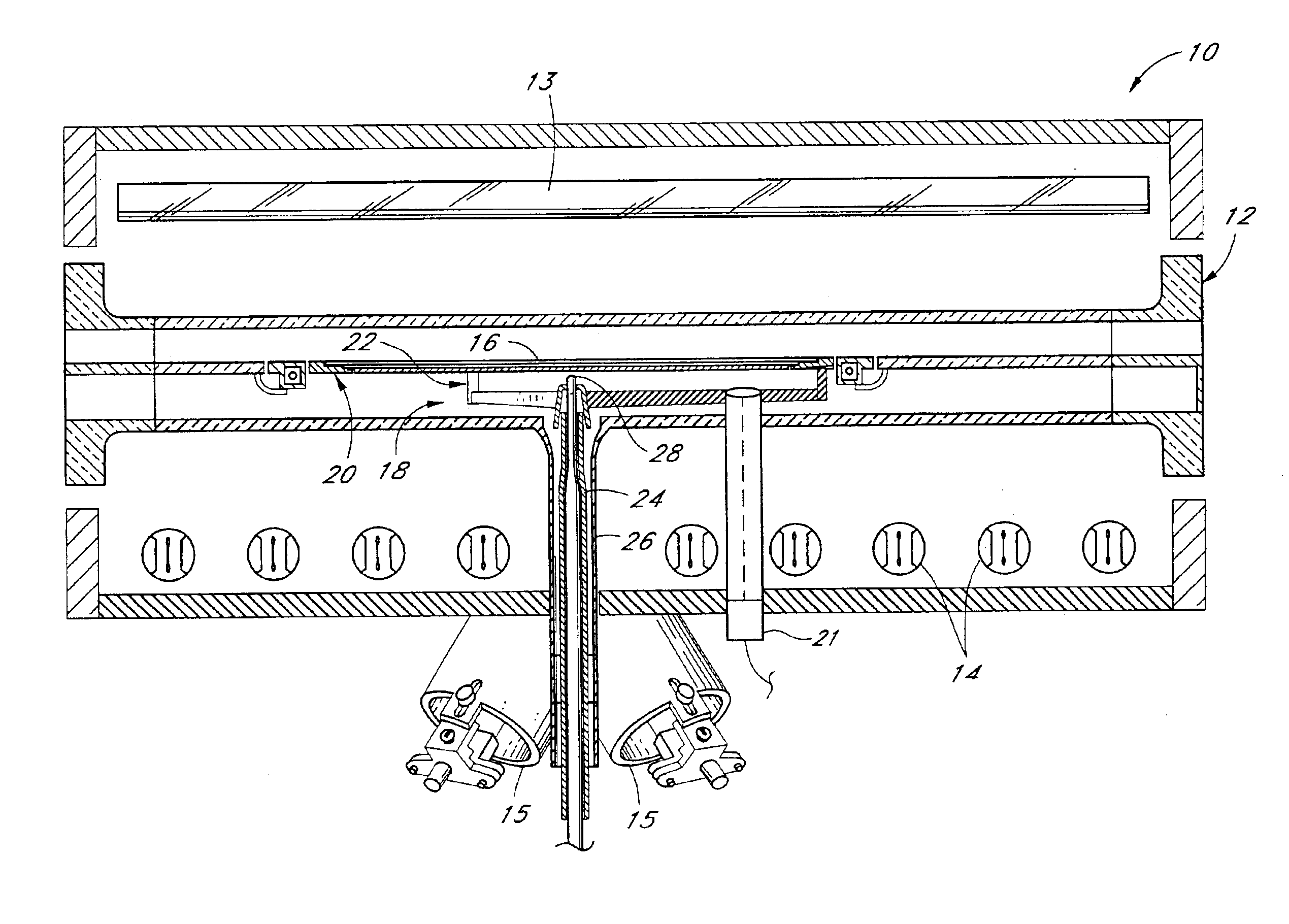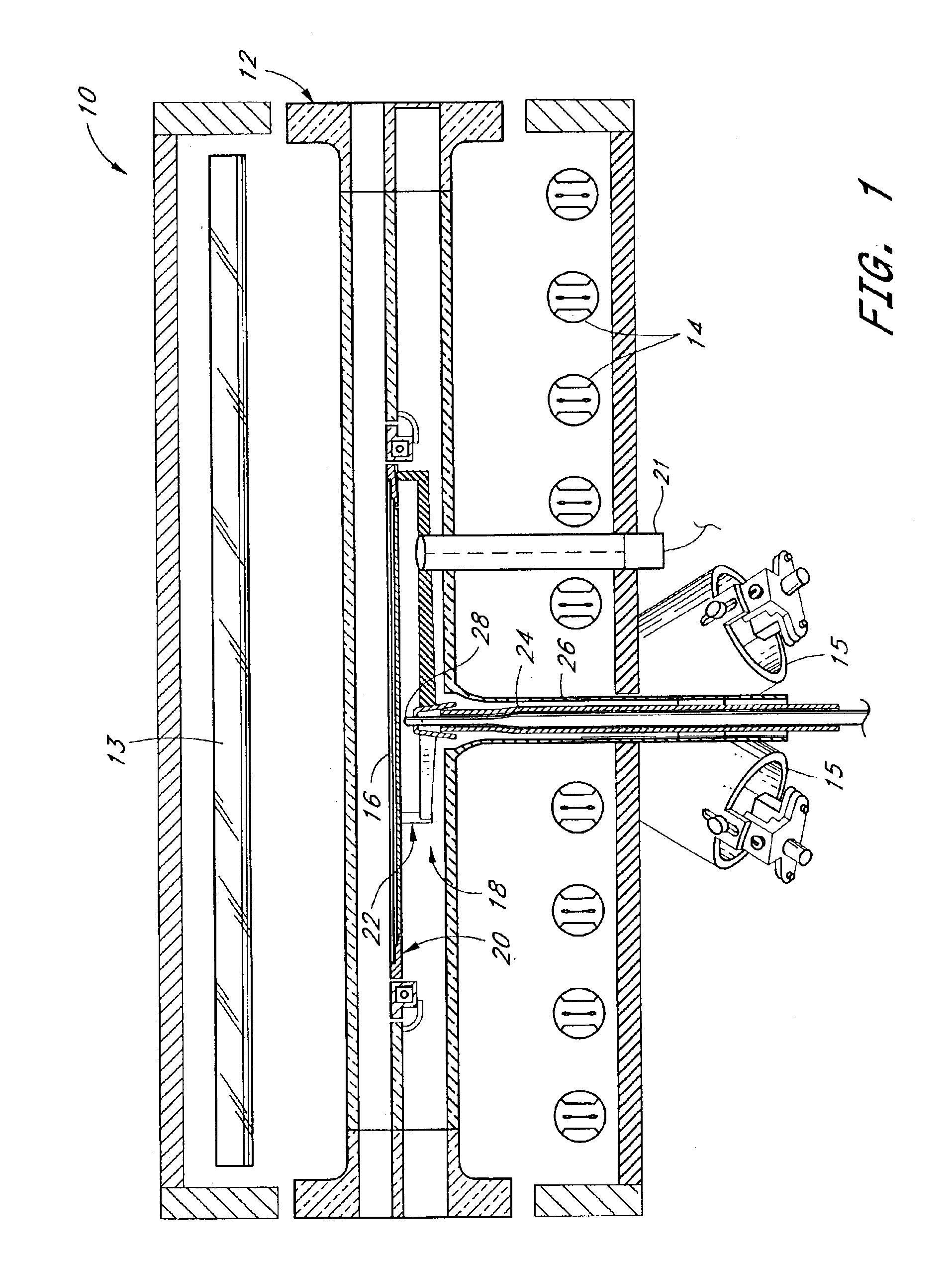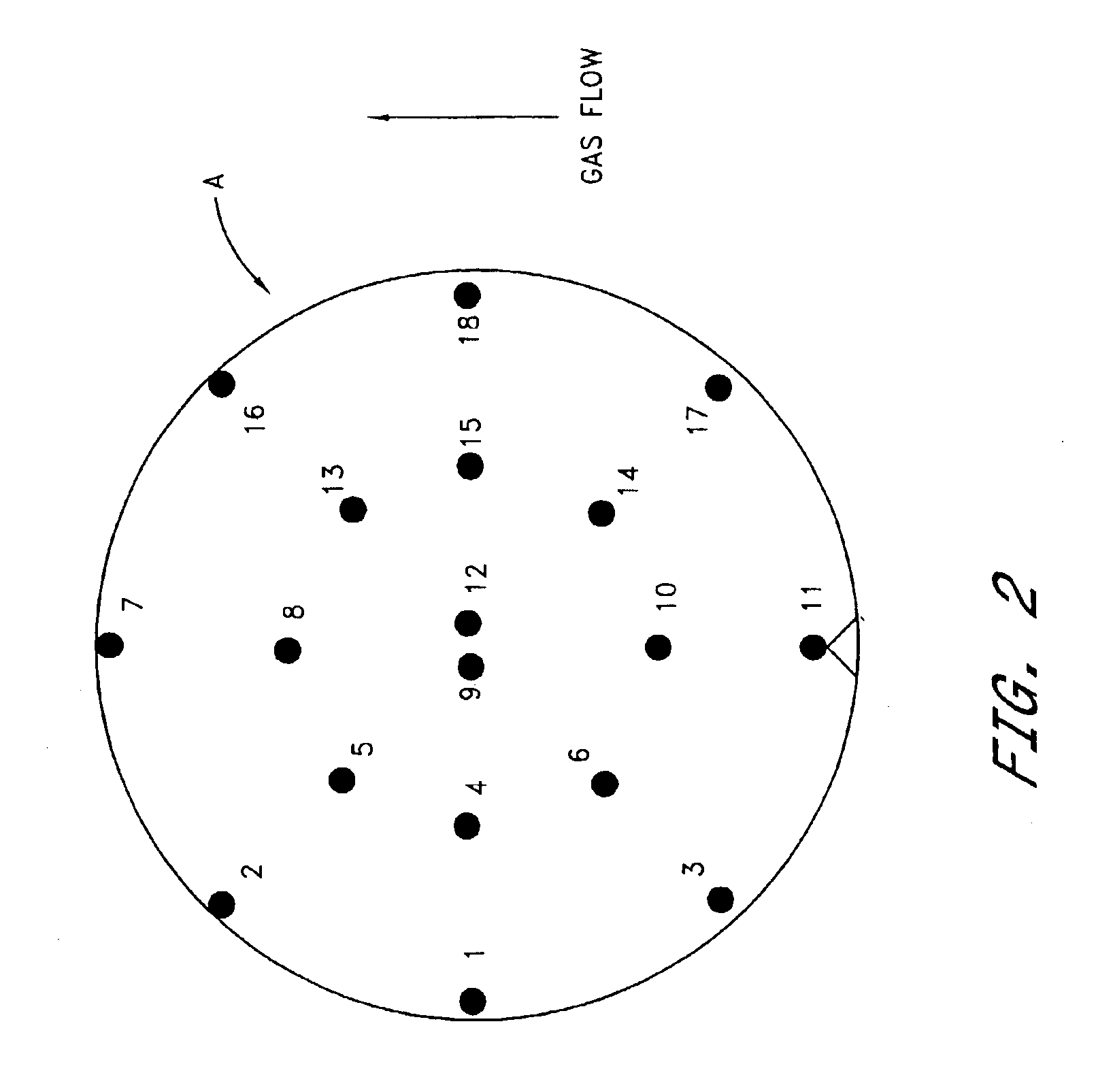Pyrometer calibrated wafer temperature estimator
a temperature estimator and pyrometer technology, applied in the field of semiconductor processing, can solve the problems of large dynamic measurement error, change in deposition rate and undesirable layer thickness, and unpredictable source of measurement error
- Summary
- Abstract
- Description
- Claims
- Application Information
AI Technical Summary
Benefits of technology
Problems solved by technology
Method used
Image
Examples
Embodiment Construction
[0023]In the wafer processing reactor 10 of FIG. 1, a wafer 16 is supported within a reaction chamber 12 upon a wafer support 18. The support 18 includes a spider 22 supporting a susceptor 20 upon which a wafer 16 rests. The spider 22 is mounted to a shaft 24, which extends downwardly through a tube 26 depending from the chamber 12 lower wall.
[0024]The reactor 10 is equipped with a heating system comprising radiant heating elements 13, 14 and heating lamps 15, all used to raise the wafer 16 to the process temperature. Each of the elongated tube-type heating elements 13, 14 is preferably a high intensity tungsten filament lamp. Such lamps produce radiant heat energy that is transmitted through the walls of the reaction chamber 12 without appreciable absorption. As is known in the art of semiconductor processing, the power of the various lamps, 13, 14, 15 can be controlled independently or in grouped zones in response to temperature sensors. Process temperatures are normally between a...
PUM
| Property | Measurement | Unit |
|---|---|---|
| temperatures | aaaaa | aaaaa |
| temperatures | aaaaa | aaaaa |
| temperature | aaaaa | aaaaa |
Abstract
Description
Claims
Application Information
 Login to View More
Login to View More - R&D
- Intellectual Property
- Life Sciences
- Materials
- Tech Scout
- Unparalleled Data Quality
- Higher Quality Content
- 60% Fewer Hallucinations
Browse by: Latest US Patents, China's latest patents, Technical Efficacy Thesaurus, Application Domain, Technology Topic, Popular Technical Reports.
© 2025 PatSnap. All rights reserved.Legal|Privacy policy|Modern Slavery Act Transparency Statement|Sitemap|About US| Contact US: help@patsnap.com



